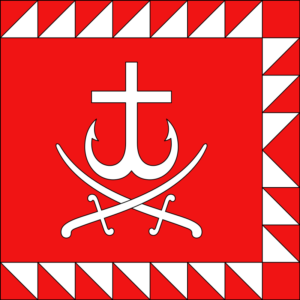 The city of Vinnytsia is a regional centre in the Vinnytsia Oblast, located on the river Southern Bug. Its total area is 80 km2 and is home to 370,000 people.
The city of Vinnytsia is a regional centre in the Vinnytsia Oblast, located on the river Southern Bug. Its total area is 80 km2 and is home to 370,000 people.
About 70% of the city population is served by district heating systems. CE VMR “Vinnytsyamiskteploenerho” provides 84% of the city’s heat supply.
Vinnytsia Demonstration Project – overview
The demonstration project in Vinnytsia included eleven residential building blocks and a hospital. Heat and hot water to the buildings was supplied from two boiler houses. The project concept was to:
- Introduce a demand-driven heat supply to customers, by installing individual heat substations with control of heat supply in relation to the outdoor temperature.
- Reduce losses in heat distribution by replacing heat distribution pipelines in the area.
- Closure of the inefficient smaller boiler house in the area, which was made possible due to the reductions of heat demand.
Vinnytsia Demonstration Project – details
The project area included eleven residential building blocks and a hospital.
Specifics of the Vinnytsia project included:
- Individual Heat Substations – Introduction of 11 IHSs for residential building blocks
- Installation of a new CHS for the hospital
- Network replacement – approx. 1,500m of heat distribution pipelines in the area
- Close down of the existing boiler house
The investment amounted to EUR 619,847. The financing plan was as follows:
- Total loan – EUR 219,955 (35%)
- Total grant – EUR 299,892 (48%)
- Total Vinnytsia local contribution – EUR 100,000 (16%)
The project benefited the local community by:
- Saving 4,730 MWh heat per year
- Saving 500,000 m³ gas per year
- Saving 80 MWh electricity per year
- Saving 950 tonnes CO2 per year
The project in Vinnytsia demonstrated what can be achieved by analysing the district heating system as a whole and by using best practices in technical design and project implementation. By the introduction of individual heating substations and new modern district heating pipelines, the losses were reduced, which in turn resulted in less capacity demand for heating and hot water preparation. As a result, the heat load was connected to a more efficient boiler house with excess capacity and an inefficient boiler house was taken out of operation. Apart from the improved services to the about 2,100 residents living in the buildings, the project was profitable for the utility. The use of modern design and implementation practices was essential for the project outcome, challenging established norms, practices and ways of thinking.
Current status
The project was completed in spring 2015. All goods were procured, installed, and successfully commissioned. Loan completely paid off in 2021.
Photo credit: Håkan Henriksson
